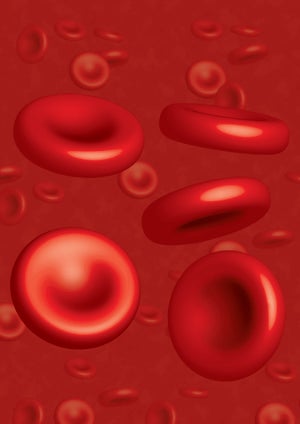These materials, which are mixtures of blood products along with stabilizers and other supportive components, are packaged in specialized vials and are used daily in the necessary process of calibration verification of hematology instruments found in the medical laboratories of hospitals, clinics, reference labs, and physician group offices.
With over 20 years of experience in the biomedical and electronics field, Mr. Amato was very adequately positioned to identify opportunities for innovation. Currently, a laboratory’s standard operation procedure for the calibration verification of hematology instruments largely depends on the subjective and independent decisions made by the operators of the hematology instruments.
Such procedures, if not consistent, in each use of the material by every operator, can cause an accelerated cumulative degradation beyond that expected of the material’s lifetime performance integrity. Though mostly allotted for in the material design, these human-induced degradatory errors cannot entirely be accounted for, allowing for the potential concern that either the QCM vials or the integral systems of the hematology instruments may be at fault should any of the instrument’s results be unacceptable. The resulting errors can be extremely costly – not only to the hundreds of dollars to discard and replace the limited and specific lot of the questionable QCM vials, but also to the down-time in instrument testing revenue and the overhead troubleshooting costs incurred by lab and instrument repair personnel. More importantly, the patient materials being tested incur inaccuracies and the time between testing and patient results can be greatly elongated. This directly impacts the response time by doctors in responding to patient issues discovered through hematology test results.
Using the patent-pending ViAlert product, these inconsistencies are greatly reduced. This simple innovative device provides for up to three vials of QCM, which are placed in designated wells and then monitored by the ViAlert device to identify ambient room temperature. Once reached, the handler is alerted by a distinctive sound to utilize the QCM and the handler is alerted once again after a specific amount of time has passed indicating that the QCM should be placed back into a refrigerated setting. The ViAlert device provides control and consistency to this necessary and costly testing process and greatly reduced the expenses associated with the testing process.
The UCF Venture Lab was approached in January for product marketing assistance for ViAlert. Since then, with the aid of coach Frank Watts, the Venture Lab has provided sales and marketing strategies and has assisted in discerning the proper methods for bringing a medical diagnostics device to market. Mr. Amato is steadily readying ViAlert for a commercial debut and extends his appreciation to the Venture Lab team for their ongoing assistance with his entrepreneurial venture.
